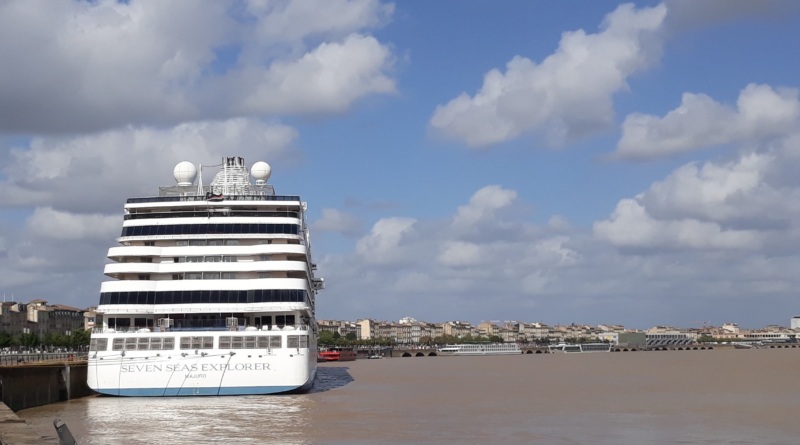Bordeaux: a marriage of prestige and risk
Bordeaux: The name evokes a majestic setting with the largest estuary in Europe and prestigious architecture, technologies and agriculture. It is also linked to a series of floods – some were lethal – economic declines but also to Real Estate speculations and gentrifications, and finally to controversial technological tools.
So how to find one’s way through all those contradictions? Can one settle in this agglomeration and build a long term project? Is it wise to invest into Stock shares or Real Estate capital?
After a presentation of the different prestigious assets of the Bordeaux metropolis and the Gironde estuary, we will look, first, at the intrinsic risks of the geographical and urban context of the agglomeration, and then to the socio-economic development of the city.
(Cover photo: the luxury liner Seven Seas Explorer, a gross tonnage of over 55,000 tons and measuring 224 meters in length[1]CRUISEMAPPER, Seven Seas Review and Specifications, [consulted on the 11/11/2019]. Available at: https://www.cruisemapper.com/ships/Seven-Seas-Explorer-1038, at her moorings at the quay of the Garonne River, Central Bordeaux. Her fuel engines are turning in order to provide power to the vessel. Photo: BdF, September 26th 2019.)
Bordeaux’s Assets
The largest architectural ensemble of the eighteenth century, with its classic limestone style that runs along the banks of the Garonne, the city appears from the outset among the most beautiful cities in the world. This majestic beauty, while operating itself in a harmonious way in its dimensions, its perspectives and its colors, is accompanied by a terroir product that is famous and reproduced on several continents, the wine, and more precisely the Grands Crus Classés whose bottles display prices starting from several hundred euros per unit without being able to provide the demand.
The development of the defense, aeronautics and pharmacy industries contributes to the scientific and economic influence of Bordeaux. Being a researcher in this region can prove to be an excellent position: buoyant sectors in region whic one likes for for its mild ocean temperatures, for the proximity of the Bassin d’Arcachon and the seaside, and, a little further to the south, the Pyrenees mountains [2]The Pourtalet Pass, located next to the Pic du Midi of Ossau, 2884 m high..
The arrival of the High-Speed-Train, or TGV[3]Train à Grande Vitesse. Commercial speed is at 320 km/h and links Paris to Bordeaux in 2 hours., in the Girondine capital, in parallel with all the facades restoration works undertaken for thirty years, crowns an era of prosperity, rejuvenation and entry of the city into the twenty-first century through a chic and fashioned trend. In addition, and as another sign of the development of the Bordeaux agglomeration, a project of a metropolitan express railways network (also called RER, or Réseau Express Régional, in reference to the Paris regionial train) is currently on track [3]. This network will use the existing tracks, with the necessary technical improvements, and will extend the local service to a radius of 50 km around the train stations of Saint-Jean and Talance Médoquine as well as that of Bouscat Sainte-Germaine which should come into service in 2021.
Thus Bordeaux gets into a connected and mobile trend of high-added value, in a stylish urban setting or, to use a buzzword, gentrification. Even if a mix-up effort exists, with the establishment of social housing (but of which categories?), in accordance with the ANRU Act, obliging any city to dedicate 25% of its housing stock to social dwellings, the average price of Bordeaux property has increased by 38% over the last four years .


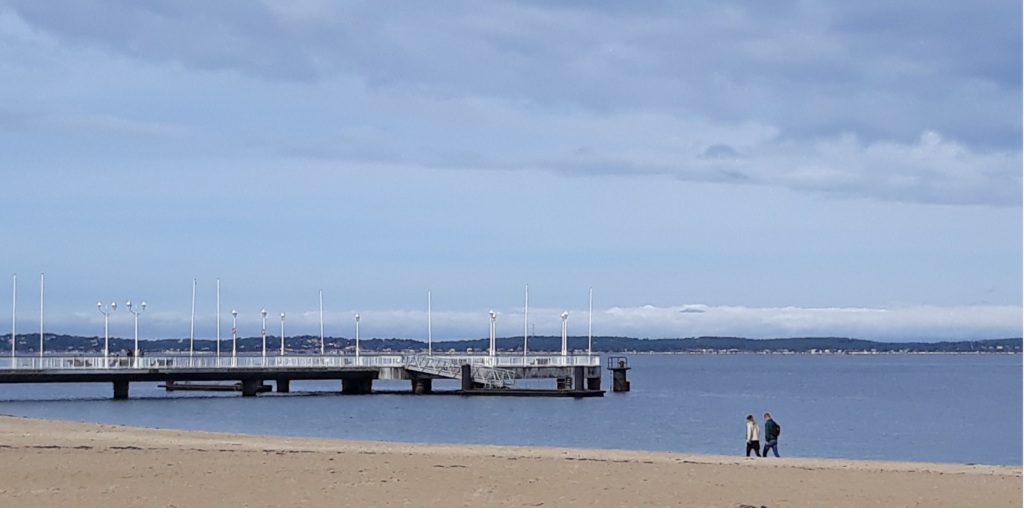

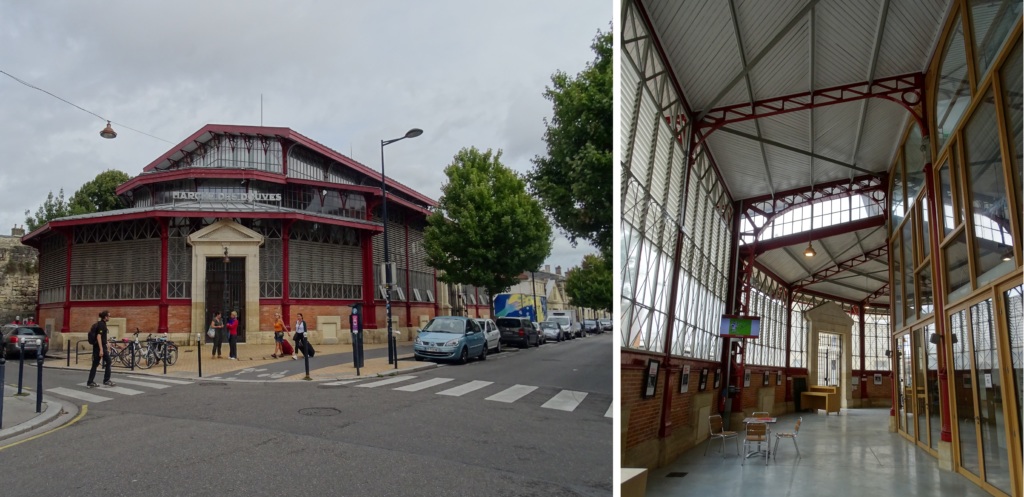
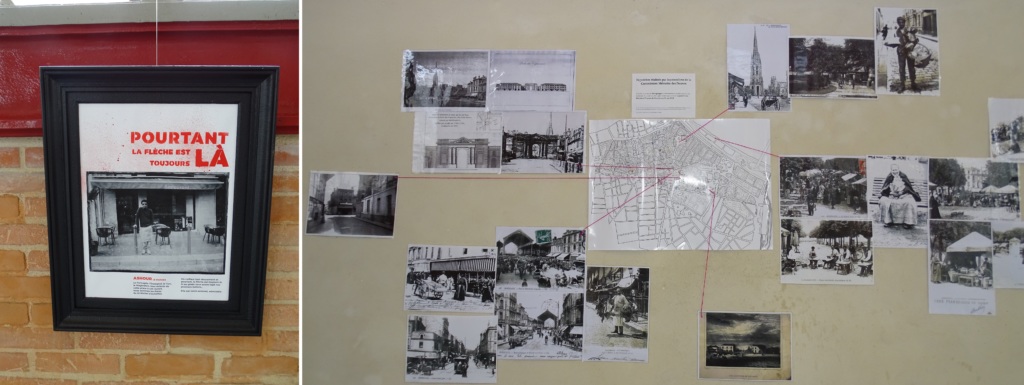


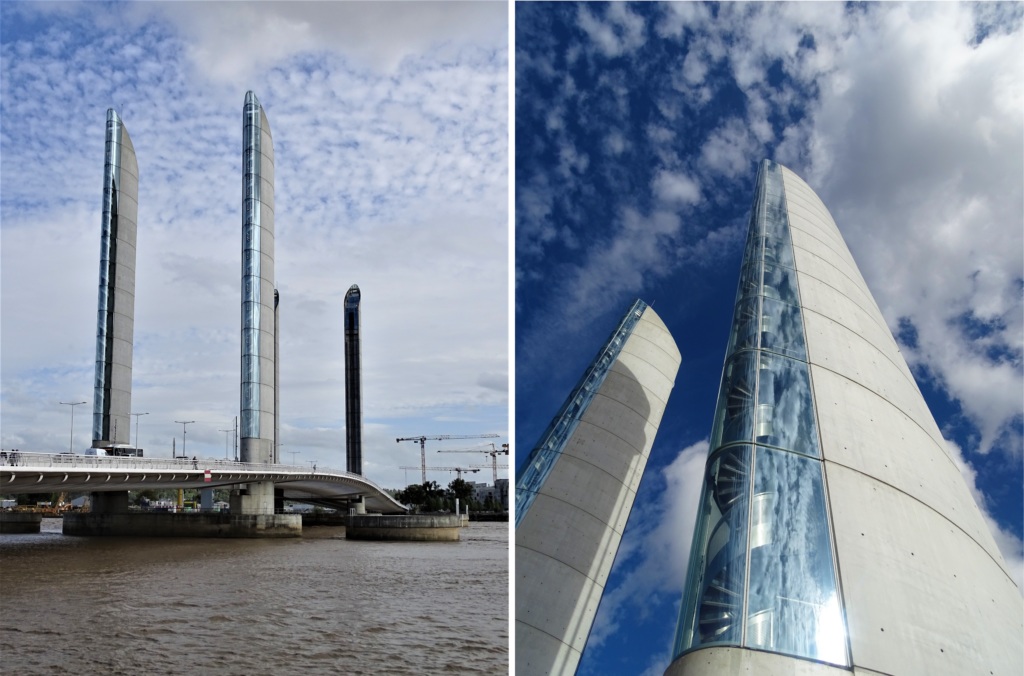
Flood risks
Once we have admired these 18th century facades and these recent technological prowess, let us enter a little more into the daily realities of the city, not only those experienced today but also those belonging to the past. Indeed, this past continues to deeply influence the landscape and to pose challenges to the (peri)urban inhabitants of the Bordeaux metropolis.
Bordeaux regularly undergoes the onslaught of the Garonne: between April 5th and 7th of 1770, the river rose to 8.52 m; in June 1855, the water level reached 10.32 m. In 1879, the floods of the Garonne basin caused more than 500 deaths. In Bordeaux, the flood was aggravated by strong tides [and submerged] the warves of both banks[5]SALOMON Jean-Noel, “The flood in the lower valley of the Garonne and the estuary of the Gironde during the “storm of the century” (27-28 December 1999)” in Géomorphologie : relief, processus, environnement n°2, 2002, Université Michel de Montaigne-Bordeaux-3, p 128..
During the month of February 1979, the Girondine capital is flooded. The water rises to 9.60 m.
In 1981, the same conditions as those of 1879 are reproduced: heavy rainfall accumulated with a high tide floods Bordeaux again. Between 13th and 15th December 1981, the flood rises up to 9.50 m in the municipality of Marmande yet located about 100 km upstream of the river, so at a place where the flow is lower than in Bordeaux.
On March 18th 1988, the same tide-storm phenomenon [6]idem. is repeated.
On December 27th and 28th, 1999, an identical type of event comes again: a violent storm combined with high tidal coefficients leads to a high flood: 7.05 m water level in Saint-Louis-de-Montferrand, city located a few km downstream from Bordeaux, althought the planned level was 4.60 m.
Thus, even if local officials often call floods phenomena “unpredictable”, statistics and historical reports show that not only Bordeaux, but also the whole Gironde River basin, are located in territories with significant stakes and high vulnerability to floods because of their geographical and urban characteristics.
Nuclear power plants need water to both turn their electromagnetic turbines and cool them. They must therefore be located near the sea or a river, like the Braud-et-Saint-Louis plant in the Blayais. The latter was flooded during the December 1999 storm and its security system was partially damaged, despite the presence of dikes whose height had been calculated according to the tide level but without taking into account the accumulation of several meteorological movements: strong flow coefficients (greater than 110 on a scale of 120), heavy rainfall, atmospheric depression, storm and swell. If we take into account all the parameters, including the morphology in the funnel of the Gironde estuary that increases the waves, according to the geo-physicist Jean-Noel Salomon, we are far from the count [ …] even with dikes that are high up to 8 m.
It should also be remembered that the 1999 incident will have cost, at the time, a whopping 70 million francs. The flood could have led to a more serious nuclear problem. Thus, this type of hazard can also lead to technological risks.
To these geomorphological and atmospheric data must be added two facts likely to increase the probability of flooding: the artificialization of soil and global warming. The first is in the short term, the second is in a longer-term perspective but one can already feel its effects. In my article on floods in Paris and London, and based on the work of Lazaro[7]LAZARO TR, Urban hydrology: a multidisciplinary perspective (revised edition), ed Technomic Publishing Co, Inc., 1990, USA, p : 19., I showed that when land is completely artificialized (concrete parking for example) and so that the water can not infiltrate the ground, not only the flow is increased by three but the latter happens three times faster. Concreting a lowland meadow, especially if it is located in the major bed of a watercourse, may cause a flood three times higher and three times faster.

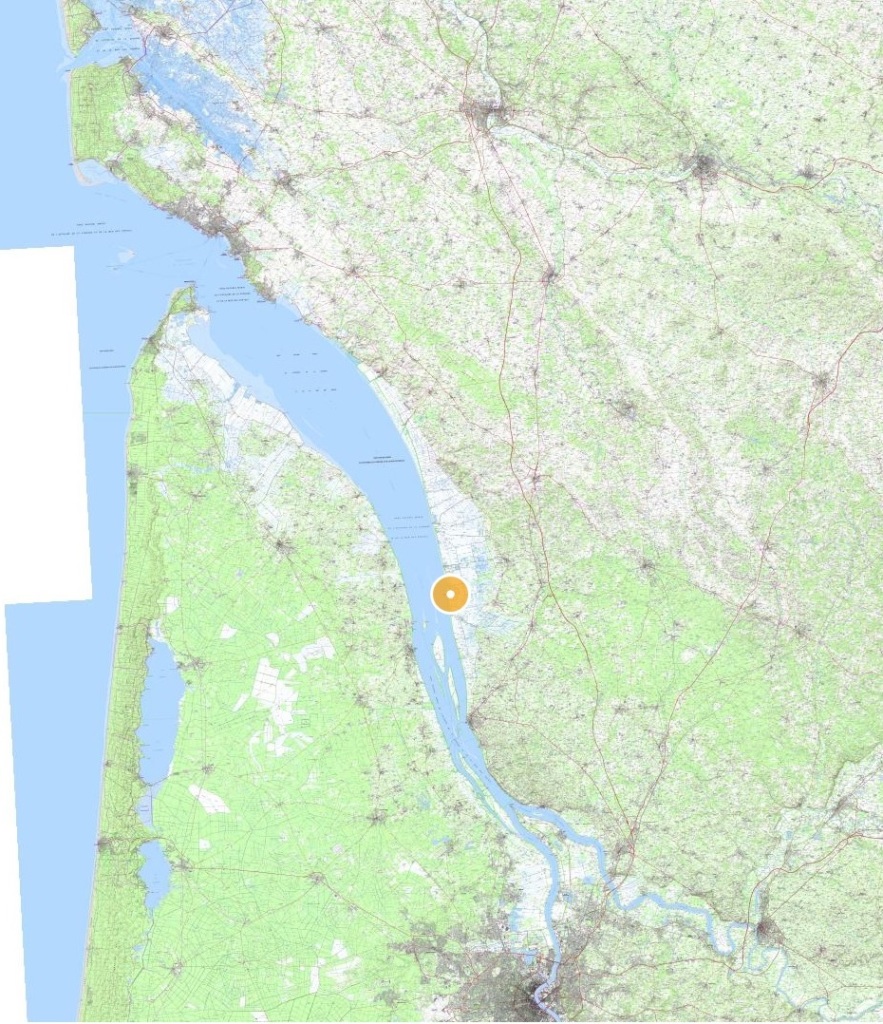
Pollution Risks
Pollution from (peri)urban transport continues to be a problem for Bordeaux. The city has chosen to pedestrianize many of its downtown streets. This option has ecological interests especially since it is accompanied by the creation of parking on its periphery, near the terminus of the Tramway lines: the inhabitants of the distant suburbs take their cars, park them away from the city center then take public transport. This multimodal offer, which is found in other provincial agglomerations, such as Metz for example, has the advantage of reducing automobile traffic in the historic hyper-center and thus reducing pollution and greenhouse gas (GHG) emissions. To these advantages are opposed several questions: what was the ecological impact of the construction of the tramway? How much did it cost? Professor emeritus Michel Carmona reminds us that we need to emit 1 metric ton of CO2 to produce 1 metric ton of steel and that the tramway solution is expensive compared to conventional buses. These buses, equipped with electric batteries, or trolleybuses such as those in Lausanne, could have done the same service, but with a much cheaper price and a much smaller pollution and GHG impact. But it is true that a tendency towards industrial protectionism, or Industrial Colbertism, has influenced the choice for a tramway [10]CARMONA Michel & al., Tramway, le coût d’une mode (Tramway, the cost of a fashion), Orleans (France), Paradigm, 2001, p 10 , 67 & 133..
What has been the tramway impact on local commerce? Indeed, customers can no longer make major purchases when they can no longer use their personal vehicle, unless they have their shopping transported which has a significant additional cost.
The presence of giant cruise ships, like the Seven Seas Explorer, docked next to the Bourse du Commerce on last September 26th, contributes to emit, in terms of pollutants and GHGs, the equivalent of hundreds of cars. A simple solution would be to connect the building’s internal systems to the city’s electric grid: this would not only remove the pollution during the berthing but would also bring additional revenue to the city through the sale of a power supply package. One can note that I have defined this luxury liner as “giant” compared to other river boats. In a more global reality, the Seven Seas Explorer is considered as a modest-sized maritime vessel (as a reminder: 54,000 tons and 224 meters in length) when compared to the 227,000-ton Mariner of the Seas mastodon, measuring more than 362 meters long! But regardless of size, the basic problem is that these floating cities, behind the shared dreams, emit when, they are docked, a large amount of pollutants and GHGs in the urban air because their systems are not connected to the port networks. [11]ESCACH Mélanie, Les 21 plus grand bateaux de croisière au monde (The 21 largest cruise ships in the world), February 21st, 2016, [consulted on 11th November 2019]. Available at: https://generationvoyage.fr/plus-grands-bateaux-croisiere-monde/

Economic risks
In my opinion, the main obstacle to a real economic development of Bordeaux, by the intrinsic power of its agglomeration, lies in its ability to stand out from the Paris region. It would still be necessary, as indicated in my articles on Metz, that France begins a true decentralization. For now, the opposite is true: the capital now controls 30% of French GDP (against 20% in 2011). As a move of the executive and legislative powers in the second French agglomeration, Lyon, seems to be a pure utopia [13]in ancient times, Lugdunum was the capital of Gaul.) A sign on the Autoroute du Sud (South Highway) reminds motorists that historical fact, it is more likely that, if the European Union continues to be built, the decentralization of France will come, precisely, from Europe with the executive and legislative powers in Brussels and Strasbourg (Parliament is also there, half time) and this will contribute to the economic influence of the different regions metropolicies.
Thus, the French hypercentralization represents an economic risk for Bordeaux – the Girondine capital could be confined to a simple role of local satellite or subcontractor with the TGV to ensure the link with the national decision makers – but the EU offers a track, which already exists, to provide a more autonomous political framework. Bordeaux would have everything to gain by continuing its development in partnership not only with the sprawling Paris region, which now controls 30% of French GDP, but also with other French cities such as Toulouse and its aeronautics as well as Spanish ones like San Sebastián, Bilbao, Burgos or Madrid. Partnerships exist in different fields: political science education between Bordeaux and Madrid (SCIENCES PO BORDEAUX, Fillière integrated France-Spain (Madrid), [consulted on 12/11/2019] Available on: https: // www. sciencespobordeaux.fr/fr/formation/diplome-d-institut-d-etudes-politiques/double-international-diploms-cycle4/filiere-integree-france-espagne-madrid-fife-ICOZGXQO.html)), culture (town planning ?) through a twinning with Bilbao [14]BORDEAUX, Jumelage Bordeaux-Bilbao (Twinning Bordeaux-Bilbao), [consulted on the 12th November 2019]. Available at: http://www.bordeaux.fr/ebx/LinkResolverServlet?classofcontent=presentationStandard&id= 5523. Industry also holds its place since Spain imports products made from wood and chemistry produced in the Landes region[15]FERRET Benjamin, Infographie. L’Espagne, partenaire économique privilégié des Landes (Infographic. Spain, privileged economic partner of the Landes), March 6th, 2018, [Consulted on 12th November 2019]. Available at: https://www.sudouest.fr/2018/03/06/infographie-l-spagne-parten-aire-economique-privilegie-des-landes-4257119-3452.php as it also produces French touristic cars. Public works and transport play an important role in enabling the exchange of goods and people between the Bordeaux metropolis and its Spanish neighbors, notably via road, rail and airport infrastructures[16]BATIACTU, La relance du projet d’autoroute ferroviaire atlantique avec l’Espagne est confirmée (The relaunch of the Atlantic rail motorway project with Spain is confirmed), 28/10/2015, [Consulted on 12th November 2019]. Available at: https://www.batiactu.com/edito/relance-projet-autoroute-ferroviaire-atlantique-avec-42592.php. In developping those partnerships, Bordeaux and the Bassin d’Arcachon could then offer their full personality, that is to say a mixture of both Northen and Southern cultures.
From the social point of view, the transformations of the Bordeaux metropolis do not go without damage. Thus, the rehabilitations of buildings in the Saint-Michel district have changed the population and spirit of this once popular place. On one hand, the renovation of facades leads to a virtuous spiral: once a building has benefited from work, its “new” aspect will encourage the neighboring (co)property to also perform the same type of work. The whole place will therefore proceed to a wave of maintenance of real estate assets and develop the building and property (hire-sale, management, consulting) businesses. However, families with modest incomes are gradually, over the decades, driven out of the St Michel district and are replaced by Bobos (Bohemian Bourgeois) with high incomes and/or financial wealth as well as a cultural baggage and a demand to which the local exhibitions will endeavor to respond, such as those created by the association “la Halle des Douves”. The latter will try to “revive” the atmosphere of the neighborhood of the past, or at least that fantasized by couples of senior executives, just as the XVIIIth Century Parisian aristocracy and bourgeoisie imagined an ideal world populated with shepherds and shepherdesses, as evidenced by the paintings of Wateaux (The pastoral pleasure, The shepherds). Nevertheless, a form of nostalgia emerges from some of these cultural events in the Saint-Michel district, as if some of the authenticity had left in the luggage of the popular families.
Money attracting money, another social and medical problem also arises and that Mayor Nicolas Florian denounces viva voce: Saint-Michel is a sector almost in impunity for those who do drug trafficking[17]ALLEVI Jean-Jacques, « La sécurité, enjeu de campagne » (Security, A Political Stake, in Le Point (“Bordeaux after Juppé” dossier), 24th October 2019, p VII et VIII.. If measures such as illotage, that is to say the development of a proximity police, or the reinforcement of night patrols[18]idem seem to be unanimous, it remains that in this area, the inner solution relies in the demand. If that one drops or stops, the market will do the same. Associations can play an important role in creating social bonds in today’s “hyper-connected” urban world, a world with its challenges (loneliness) and hopes (making sense of everyday life through neighborhood life rich of its inhabitants).
Diversification must continue to get a more serene future
In short, Bordeaux has assets in different areas that, if used properly, can offer it a prominent place not only in France but also in southern and western Europe. Indeed, Hispanic tourists are not lacking in the Girondine capital (tourist signs are also in Spanish).
The economic apparatus of Bordeaux must continue to diversify: some of its advanced industries are subject to debate as the Laser Megajoule, a giant laboratory for the simulation of nuclear bombs that is to say weapons of mass destruction, or the Rafale, a hyper-sophisticated (and expensive!) combat aircraft produced by the Dassault company, who will be able to carry and launch these atomic weapons [19]“With the Rafale, India feels ready to face Pakistan”, in Courrier Interntional, October 9, 2019, [consulted on the 12th November 2019]. Available at: https://www.courrierinternational.com/review-de-presse/defense-with-the-facial-lindia-its-prefer-the-pakistan. More, the training of foreign pilots (currently Indian) in addition to the French Air Force ones, cause even more noise nuisance to the local population, may it be human or animal.[20]HUPPENOIRE Camille, “Mérignac: with the Rafale, residents fear new noise”, in France Bleue Gironde, April 7th 2019, [consulted on the 12th November 2019]. Available at:] https://www.francebleu.fr/infos/societe/merignac-avec-le-falle-les-habitants-craindre-de- new-nuisance-sound-1554565063
The so-called “Artificial” Intelligence [21]The so-called “Artificial” Intelligence is nowadays triggering a lot of debates, as many new tools with new possibilities that can be used for or against human specie, have done during their day. This technology which has been existing for several decades now via, for example, computer simulation mixes computer sciences, robotics, biology, neurology but also sociology and philosophy, and essentially consists in automating data management works, in a way that is as autonomous as possible, just as steam machine-tools have gradually replaced repetitive and fastidious or even dangerous human works inside 19th Century factories. has been in Bordeaux for several years via training centers such as the Talence National School of Cognitics or the University of Bordeaux with its OPTIM engineering Master (mathematical optimization and algorithms for decision support). Microsoft also plans to settle in Bordeaux, by the end of 2019, a school dedicated to AI, in partnership with the digital social-business Simplon company.
Start-ups are born or older companies innovate also in more traditional areas such as leather goods or architecture. For example, the young company Minuit sur Terre[22]VIARD Marie, Minuit sur Terre, [read on 8th november 2019]. Available at: http://minuitsurterre.com/, created in 2017, manufactures footwear from synthetic or recycled materials and therefore has no direct effect on animals. The architecture firm Bruit du Frigo (Fridge Noise), which has built, since 2010, eleven peri-urban refuges with unusual shapes such as a cloud or a tree trunk and put itself in a dynamic where the architect is at the service of the inhabitants and not the opposite, at least according to its manager Yvan Detraz[23]DETRAZ Yvan, Bruit du frigo, [read on 12th november 2019]. Available at: http://bruitdufrigo.com/ . See also: BORDEAUX, Bruit du frigo, [read on 12th november 2019]. Available at: http://www.bordeaux.fr/o8100/bruit-du-frigo.
Taking into account not only the geographical setting of the Garonne Basin and the Gironde Estuary, with all their parameters, but also the social history of Bordeaux, and particularly its migratory movements, would make it possible to bring more serenity to the inhabitants of the Gironde metropolis.
Bordeaux would have everything to gain by continuing its development in partnership not only with the Colbertine[24]Colbert, Minister under Louis XIV, was the manager of the French centralisation which has never stopped since, despite so-called “decentralisation” laws in 1982 and 1992. Paris Region but also with other French and Spanish agglomerations.
The use of technologies for civil purposes will soften the image of these industries and the agglomeration that hosts them (in part) and pacify heated debates following protests from associations such as the Coordination anti-nucléaire du sud-ouest (South-West Anti-Nuclear Coordination)[25]GUITTENIT Monique, Assemblée de la coordination antinucléaire Sud-Ouest, Agen-Aquitaine, le 29 mai 2014, [read on 12th november 2019]. Available at: https://www.sortirdunucleaire.org/Assemblee-de-la-coordination-antinucleaire-Sud or the Commission de recherche et d’informations indépendantes sur la radioactivité (Commission for Research and Independent Information on Radioactivity)[26]CRIIRAD, [read on 12th november 2019]. Available at: http://www.criirad.org/, opposed to the installation of the Megajoule Laser at Barp (30 km south-west of the center of Bordeaux). This laboratory could be used, if not already started, to carry out civil research on nuclear fusion, one of the main tracks for the European energy policies of tomorrow, in a context of low GHG emissions.
As Bordeaux, in its international maritime activities, abandoned the triangular trade, which flourished in the XVIIIth century[27]Bordeaux was the second French seaport in the slave trade., the choice for a civil orientation of the different new technologies would both open up economic prospects for the regional population and offer not only an ideal, but also a concrete peaceful and constructive society project who would continue to open to the world.
Thanks to Pr emeritus Jean-Noël SALOMON for his help, his deep knowledge in hydrology and his on-the-field experience .
Added bibliography[28]IRSN, Faire avancer la sûreté nucléaire (Have The Nuclear Security Progressing), [consulted on 12th November 2019]. Available at: https://www.irsn.fr/FR/connaissances/Installations_nucleaires/Les-centrales-nucleaires/reacteurs-nucleaires-France/Pages/1-reacteurs-nucleaires-France-Fonctionnement.aspx#.Xc27TtXjJPa[29]RABAU Patrick, Bordeaux au XVIIIe siècle: Le commerce atlantique et l’esclavage (Bordeaux in the XVIIIth century: Atlantic trade and slavery), [consulted on 12th November 2019]. Available at: http://www.musee-aquitaine-bordeaux.fr/sites/musee-aquitaine.fr/files/5._bordeaux_le_commerce_atlantique_et_lesclavage.pdf[30]TOCHEPORT Bernard, Regards photographiques sur Bordeaux et la Gironde, Bordeaux le Grand Théâtre, L’Opéra de Bordeaux place de la Comédie (Photographic views of Bordeaux and the Gironde River, the Grand Théâtre, the Opera and the Place de la Comédie), [consulted on 12th November 2019]. Available at: https://www.33-bordeaux.com/grand-theatre.htm
Références

